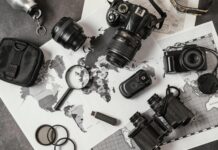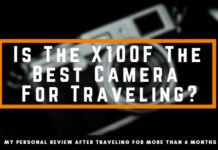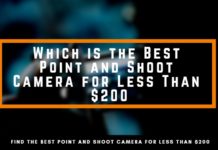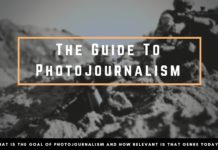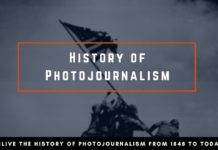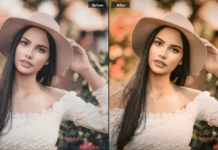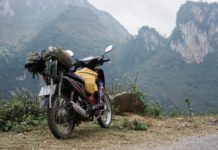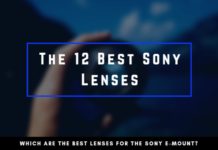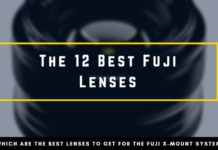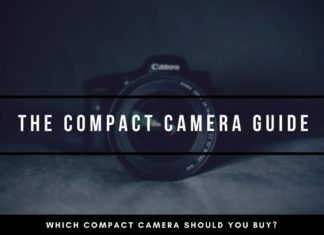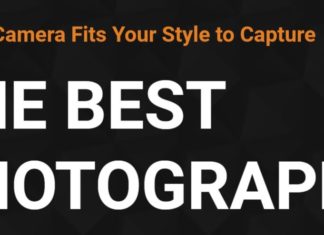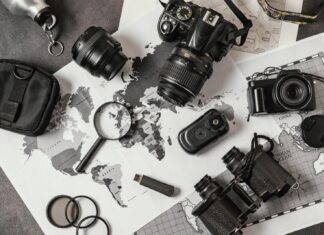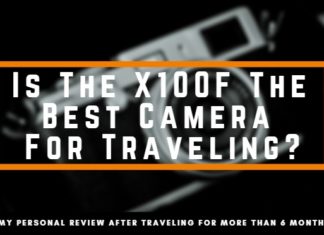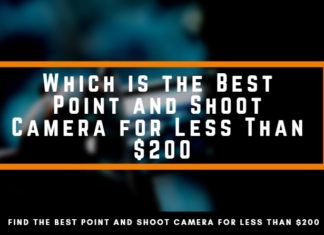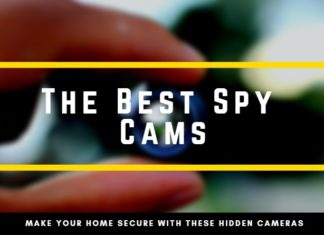The camera is only one important tool for Street Photography. Only in combination with the best lens for Street Photography, You will make the best out of Your gear. Street Photograph is very special in its requirements. Should You buy a prime lens over a zoom lens and which focal length is the best? How much money should a new lens cost and what is the best choice for a lens for Street Photography? Here are the best solutions for the common camera manufacturers to buy a new lens for Street Photography.
Best Lenses for Street Photography
I prefer anything from 28mm to 50mm for Street Photography. The most used focal length is the 35mm, as it comes close to our normal human vision. 35mm for Street Photography is ideal because it allows us to be in the middle of the action, getting close to people, but without the distortion that 28mm sometimes can have.
The lenses are also focused on Street Photography. Therefore I prefer a light and small lens, over a bulky heavy lens that may have an additional f-stop available. The maximum aperture is not crucial for Street Photography, as we are using something around f/8 most of the time to zone-focus.
I try to list mostly lenses in the range from 28mm to 50mm in the full frame equivalent. With occasional exceptions when there are other outstanding options.
Canon
Canon EF-S 24mm f/2.8 STM
The Canon EF-S 24mm is the best choice for a Canon lens to enter the 35mm full-frame equivalent range. The lens is very compact, almost unnoticeable on the camera while having a high quality. With seven aperture blades, the lens creates a great bokeh and soft background.
It is the smallest and lightest lens out of the EF-S series which is popular because of its great price-performance. For its price, the lenses are a steal and offer a great image quality. The only limitation lies in the “high” aperture of f/2.8 which hasn’t really an influence on my Street Photography anyway.
License
Features
Features
Templates
PRO
Great Bokeh
Very Small
Lightest Lens
CONTRA
Aperture of F/2.8
Check The Price on Amazon
Review of the Canon EF-S 24mm
Canon EF 50mm f/1.8 STM
The Canon 50mm f/1.8 was the first lens that I purchased for my Canon 1100D after photographing with the Kit-Zoom lens for quite some time. Although the 50mm becomes a little long on an APS-C sensor, it was a great first entry in the fixed focal length world. Before I only used the standard zoom-lens that comes bundled with the camera and although I had much fun doing Street Photography, it doesn’t feel right with the zoom lens.
With the Canon 50mm f/1.8, the focus is much faster, if You prefer to use the auto-focus. The max aperture of f/1.8 also allows creates a very short depth of field which is very beneficial when shooting in crowded areas and You want to single out a subject, or You are simply interested in trying out some portrait photography.
As an alternative, there is also the Canon 50mm f/1.4, but at almost double the price, I would always prefer to go with the f/1.8.
License
Features
Features
Templates
PRO
Very Inexpensive
Good Aperture of F/1.8
Fast Auto-Focus
CONTRA
Simple Built-Quality
Check the current Price
Review of the Canon 50mm f/1.8
Sigma 30mm F1.4 Art DC
Canon doesn’t offer a lot of prime lenses and uses a lot of zoom lenses in a range that is far away from what we need for Street Photography.
If You prefer a lens that is close to the 50mm, then Sigma has a solution for You with its f/1.4 Art DC lens. This lens offers the best image quality, compared to the Canon lenses, while being a little heavier and expensive.
The lens utilizes a Hyper-Sonic Motor for the auto-focus which ensures a very silent movement. A silent lens like the Sigma f/1.4 is great because You can stay unnoticed longer and aren’t raising attention with auto-focus motor noises.
I recommend this lens to everyone who seeks the highest image quality for Street Photography and doesn’t mind a little more weight to carry around.
License
Features
Features
Features
PRO
Best Image Quality
Aperture of F/1.4
Silent Auto-Focus
CONTRA
Rather Expensive
A little Heavier
Check the current Price
Review of the Sigma 30mm f/1.4
Nikon
Nikon AF-S FX NIKKOR 50mm f/1.8G
Since Nikon offers more entry-level full-frame cameras it is only reasonable to list more lenses that are made for the full frame format.
The Nikkor 50mm f/1.8G is a great lens that continues the tradition of the very reputable Nikkor lenses. Arrived in the modern time, these lenses still offer a great image quality, while employing the newest features.
Of course, this lens has an auto-focus and with the Nikon Silent Wave Motor, the auto-focus sound isn’t noticeable. With a weight of 187g, the lens is also super light-weight, especially when considering that it is a full frame lens and it isn’t really fair to compare the full frame lenses with crop lenses. Therefore it is a great travel companion and is a great choice for Street Photography.
License
Features
Features
Features
PRO
Good Image Quality
Very Light
Full-Frame Lens
CONTRA
Increased Price
Check the current Price
Review of the Nikkor 50mm f/1.8G
Nikon AF-S DX NIKKOR 35mm f/1.8G
As an alternative for the crop sensor cameras of Nikon, the Nikkor 35mm f/1.8 is the best choice when it comes to the combination of weight, image quality, and price.
The lens also features the known Nikon silent wave motor and the design of the lens aims to reduce the chromatic aberration at a higher f-stop.
License
Features
Features
Features
PRO
Light Weight
Good Image Quality
Inexpensive
CONTRA
Chromatic Abberations
Check the current Price
Review of the Nikkor 35mm f/1.8G
Tamron 10-24mm F/3.5-6.3 Di-II
As one of the few zoom-lenses in this guide for the best lenses for Street Photography, this Tamron lens offers a reasonable range from 10 to 24mm for Nikon Crop sensors, which makes it about a 16mm to 35mm range taking the crop factor into account.
The 16mm might be a little too wide angle, but if You are eager to experiment with shorter focal ranges in Street Photography without wanting to buy a fish-eye lens right away, this lens is a good choice to experiment with.
The aperture of 3,5 to 6,3 doesn’t sound a lot, but for Street Photography it is perfectly in my opinion.
For a zoom lens with this range, the price is also very reasonable, while integrating some great features for a good image quality, especially in the shorter range of the focal length. The distortion at the lower end is reduced by the optical design which includes 16 elements.
License
Features
Features
Features
PRO
Good Range for Street Photography
Very Few Distortions
Allows Experiments
CONTRA
Very limited Aperture
Check the current Price
Review of the Tamron 10-24mm for Nikon
Fujifilm
Fujinon XF16mm F1.4 R
Fuji offers at the wide angle range with the Fujinon XF 16mm a real best when it comes to image quality. At a max aperture of 1.4, You are able to create still some bokeh and blur the background, although the depth of field is usually very extended.
For a better assistance for zone-focusing, You also have makers on the focus ring which indicate the depth of field for the corresponding aperture.
This lens is remarkable for its near-focus ability, which opens up new creative photography options for Your Street Photography.
License
Features
Features
Features
PRO
Max Aperture of 1.4
Markers for Depth of Field
Near-Focus Ability
CONTRA
Bulky
Check the current Price
Review of the Fujinon XF 16mm f/1.4
Fujinon XF 23 mm F/2
The Fujinon 23mm F/2 is a great fit for the Fujifilm X-Pro2 or the X-T3. At the crop sensors, it has the field of view of roughly a 35mm. The lens may seem a little bulky on the preview picture, but coming in at only around 180g, the Fuji lens is perfectly suitable for long walks on the streets and a full day of Street Photography.
A sturdy design allows not only for great quality but also for good weather resistance. Being operable at lower temperatures as low as -10°C, the lens can also capture some great pictures during the winter, without risking the auto-focus system to die.
From a personal preference, I really like the optical design and haptic of the lenses. They look and feel like classic manual lenses while being modern. For Street Photography, that is not only a simple reason for some added fun but useful because in combination with the Fuji Cameras it may seem like You are taking an old film camera out for a walk.
With a camera & lens combination like this, You are less intimidating to people and they will be often more friendly, which is an undeniable advantage in Street Photography.
License
Features
Features
Features
PRO
Sturdy Design
Operable in Low Temperature
Vintage Look
CONTRA
Longer Design
Check the current Price
Review of the Fujinon 23mm F/2
Fujinon XF18mm F2 R
The Fuji 18mm with an aperture of f/2 is a great alternative to the 16mm f/1.4 presented before. But the 18mm is more than a simple alternative. It has a real pancake design, which makes it more unobtrusive and doesn’t carry that much weight.
The image quality is still great while weighing only 114g in comparison to the heavier 16mm lens which comes in at 376g. For the price advantage that the 18mm lens has, I would prefer it over the 16mm lens for Street Photography.
License
Features
Features
Features
PRO
Pancake Design
Very Light
Unobstrusive
CONTRA
Limited Aperture
Check the current Price
Review of the Fujinon 18mm f/2.0
Sony
Sony SEL28F20 FE 28mm
When it comes to lenses, Sony has one of the greatest offers to choose from. Not only are the Sony lenses a great choice, since they work closely together with the optics manufacturer Zeiss, but You can also use old-fashioned manual glass. The old full frame glass benefits from the new manual-focus options that the Sony mirrorless cameras offer.
I open the Sony lenses with the 28mm at a max aperture of f/2. At the full-frame cameras like the Sony Alpha mirrorless camera models, You can already create some bokeh with it. The circular blades used in this lens are specifically made to enhance the look of the bokeh when using an open aperture.
If You want to experiment with different focal lengths, You can also add converters that change the 28mm to either a 21mm true wide-angle lens or even a 16mm fish-eye perspective, for a fraction of the cost a new lens would imply.
License
Features
Features
Features
PRO
Great Bokeh
Combinable with Converters
New Manual Focus Features
CONTRA
Wide Depth of Field
Check the current Price
Review of the Sony SEL28F20 FE 28mm
Sony SEL35F18 35mm f/1.8
In terms of personal preference, I would buy this Sony 35mm over the 28mm version. The lens is a little smaller in its design and the cheaper price is also an advantage for this Sony lens.
The lens features an image-stabilization which is great for shooting at slower shutter speeds, allowing You to go below the often stated limited of 1/50s of a second for a 35mm lens. This makes it possible to blur certain features, even in Street Photography like fast moving cars or runners directly in front of You, without the need of a tripod to set up the camera.
License
Features
Features
Features
PRO
Smaller Design
Image Stabilization
Longer Shutter Speeds
CONTRA
More Expensive
Check the current Price
Review of the Sony 35mm f/1.8
Sony SEL50F18 50mm f/1.8
The third option by Sony is the 50mm variant. This lens is the definite price-performance winner by Sony and offers great image quality while being very inexpensive.
Like the other two versions, the 50mm models also features image stabilization as well as the circular aperture, for an improved bokeh. The technology of the auto-focus allows for a very near focus distance and works very quickly since only the middle lenses are moving. Due to this design, You are also able to use camera filters, while using the auto-focus.
License
Features
Features
Features
PRO
Best Price-Performance
Image Stabilization
Circular Aperture Blades
CONTRA
Time-Consuming Manual Focus
Check the current Price
Review of the Sony 50mm f/1.8
Olympus
Olympus M.Zuiko 17mm f/1.8
The micro-four-thirds system by Olympus is built to be compact and lightweight. Both factors that are very beneficial for Street Photography. The micro-four third lenses for Olympus continue this trend. Keep the crop factor of 2.0 in mind when looking at these lenses.
The Zuiko 17mm lens has the same field of view as a 35mm full-frame equivalent lens.
In combination with the Olympus OM-D or Pen series, this lens has one of the best image stabilizations available making it easy to blur the street or stream of people that are walking in front of Your camera.
With a max aperture of f/1.8, this lens is also ideal for night time Street Photography or shooting in very limited light situations.
License
Features
Features
Features
PRO
Field of View of 35mm FF lens
Image Stabilization
Good at Night
CONTRA
Only for Micro 4/3 Sensor
Check the current Price
Review of the Olympus M.Zuiko 17mm f/1.8
Olympus 25mm f/1.8
In the 50mm full-frame equivalent range, Olympus has a great option with their own 25mm f/1.8 micro four-thirds lens.
Similar to the Sony lenses, Olympus also creates an aperture blade design with circular blades that are perfect for some soft bokeh that is pleasing to the eye. The technology employed by Olympus in their lenses also reduces the flares and ghosts, which improves their capability of shooting against the sun or against back-lit situations.
The auto-focus is also one of the most silent available on the market. In combination with the silent shutter technology, Your camera makes basically zero noise while taking images.
License
Features
Features
Features
PRO
Circular Blades
Reduced Flares
Good for Shooting in Sunlight
CONTRA
Distortions When Shooting Wide Open
Check the current Price
Review of the Olympus 25mm f/1.8
Olympus 14-42mm f/3.5-5.6
Although I am usually not a big fan of zoom-lenses in Street Photography, I want You to take the Olympus 14-42mm into consideration. With a full-frame equivalent range of 28mm to 85mm, it covers all the important focal ranges, while being very small in its design.
The aperture of f/3.5 on the lowest end to f/5.6 is also very acceptable for Street Photography. The pancake design is a perfect fit for the small design of the OM-D or Pen cameras and doesn’t destroy the compactness, although being way more flexible than a prime lens.
License
Features
Features
Features
PRO
Covers a Wide Focal Range
Relatively Small
Light-Weight
CONTRA
Max Aperture of F/3.5
Check the current Price
Review of the Olympus 14-42mm lens
Prime Lens vs Zoom Lens
One of the first decisions when buying a new lens for Street Photography is the choice between a prime lens or a zoom lens. On first glance, a zoom lens seems to be the better option. You can use a range of focal length and instead of moving Yourself, You are more flexible with a zoom lens. In case the subject may be too far away, You can adjust the focal length to zoom in and get Your shot.
The benefits of a prime lens are not so obvious, but for Street Photography, I would always prefer a fixed focal length in comparison to a zoom lens. First of all, a prime lens offers a higher image quality given a same budget than the zoom lens. The construction of a prime lens is a lot easier and in many cases, a prime lens is not only less expensive than the zoom counterpart, but still has a better image quality to offer.
A prime lens is also reasonably smaller, lighter and faster. These are all attributes, that are very important when going for candid Street Photography, where size does make a difference. With a bigger zoom lens, You might come off as a paparazzi and intimidate more people and they will begin to notice You way too early before You can even land a decent shot. With a prime lens, You can have all those benefits for a smaller price.
That You aren’t able to zoom is also not a problem for me. As a Street Photographer, You should be in the middle of the action anyway, which means that You are close to Your subjects. Staying far away and zooming in doesn’t count as close. Distance is not a choice of focal length, but how far away You as a photographer are.
Therefore I would always prefer a short prime lens for Street Photography and value them a lot higher than any zoom lens.
Which Focal Length to choose
As already mentioned before, a Street Photographer shouldn’t photograph from far away and expect to get shots, that are action-packed and draw in the attention of the viewer right in the middle of the scene.
A Street Photographer should get close and to get close and being able to compose the photograph and show also the context of the subject, short focal lengths are preferred.
Anything between 28mm to 50mm is the standard “go-to” focal lengths in Street Photography. Keep in mind to account also for the crop factor. The focal lengths in this article are always related to the full-frame equivalent.
For APS-C sensors this means that You have to add a factor of around 1.6. A nominal focal length of ~18mm has the characteristic and field of view of a ~28mm lens.
For micro-four third sensors the factor of 2 makes it easier to convert to a full-frame lens.
Cameras with Fixed Lenses
In Street Photography, there are also viable cameras without the need for extra lenses. Those cameras have the advantage, that You have the same setup everytime You go out on the street. Rather than thinking about which gear investment might improve Your pictures, You are forced to work with what You have. You are becoming much more used to the camera that You use every day with the same lens and the field of view stays the same. Shooting from the hip becomes much easier, without the need to look through the viewfinder or the LCD-screen.
Those fixed lens solutions are most of the times more cost-efficient and as I only need one lens for Street Photography and don’t want to change my lens, such a camera with a fixed lens is a much better option for me than buying a camera with interchangeable lenses, but only using the same lens.
